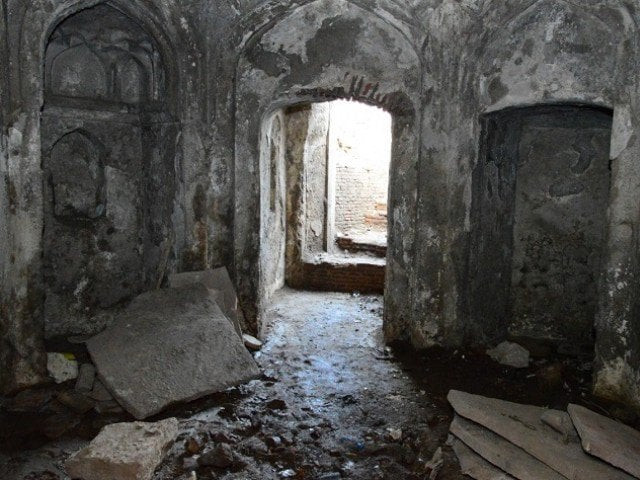Officials, archaeologists butt heads over ‘royal bath’
Archaeological Department says structure at Lahore Fort cannot be identified without proper investigations

PHOTO: EXPRESS
Previously, officials from the Walled City Lahore Authority (WLCA) discovered the structure after clearing more than 100,000 cubic feet of rubble from Emperor Akbar’s living quarters. After making the discovery, WCLA officials termed the structure a royal bath. However, according to officials from the Punjab Archaeological department, such a statement cannot be made without a proper investigation.
WCLA Conservation Director Najamul Saqib says the construction of Lahore Fort was carried out in different periods. “Majority of the work was carried out during Mughal Emperor Akbar’s rein. Then Emperor Jahangir and Emperor Shah Jehan added to the fort with several structures,” he explains.
“Through excavation, the authority is trying to uncover the fort’s many secrets,” he says. Saqib maintains that the royal bath was discovered underneath the living quarters of Punjab Archaeological Department officials.
“So far, the authority has discovered the royal kitchen, Musamam Gate and an ancient arsenal,” he emphasises. The layout of the recently discovered structure strongly resembles the royal baths constructed near Delhi Gate. Arguably, the size of these baths is smaller, but the water drainage system and chimneys to let out steam are the same, he says.
“Keeping these discoveries in mind and using our experience, we can safely assume that this structure was a royal bath,” he adds. However, this is just a preliminary study. The site needs to be properly documented, he states.
“Further, excavation will be done under and around the structure to ascertain how it is connected to the rest of the buildings in Lahore Fort. Only then will we be able to correctly identify the structure,” he maintains. He adds that beneath the structure, they were also able to spot drains and water channels.
“The structure shows no signs of human activity. Usually, the condition of the walls reveals if a building was in use. However, no such evidence has been discovered here,” he says.
On the other hand, Punjab Archaeological Department Director Malik Masood claims that the department conducted the first archaeological study of the ancient citadel in 1958. “During this, it was discovered that the fort was constructed over 13 different time periods,” he says. Construction was also carried out after the rein of the Mughals came to an end. As a result, many of the ancient structures were buried underground. “We have all the maps and documents of these structures. But due to unforeseen circumstances, some areas had to be restricted for the public and these places remain hidden from the public eye,” he claims.
The director says it is not possible to identify an ancient structure without carrying out proper research and calling in a panel of experts. |Doing so without following proper procedures is akin to making fun of history,” he expresses.
He points out that during the Mughal era, there was no concept of constructing underground baths. Malik stressed they need to ask the right questions. “If the entire fortress was constructed above ground, then why was the royal bath constructed underground? Further, how would the water be drained from an underground bath and where would the fire burn? A lot of research needs to be done in order to answer these questions. Until then, no structure can be properly identified,” he reiterates.
Archaeologist Naeem Mustafa says that coming up with a hypothesis is the first step in identifying an ancient relic. With the passage of time, its true identity begins to slowly reveal itself.
Using Mohenjo Daro and Harappa as an example, he explains that the origins of the names of the site have still not been discovered. “Mohenjo Daro can be roughly translated to mean ‘a mound of corpses’. But when people lived in Mohenjo Daro, they did not go around calling their home ‘a mound of corpses’,” he says.
“Extensive research is required in order to correctly identify a structure. The credibility of the department is questioned when their identification of an ancient discovery is proven incorrect,” he expresses.



















COMMENTS
Comments are moderated and generally will be posted if they are on-topic and not abusive.
For more information, please see our Comments FAQ